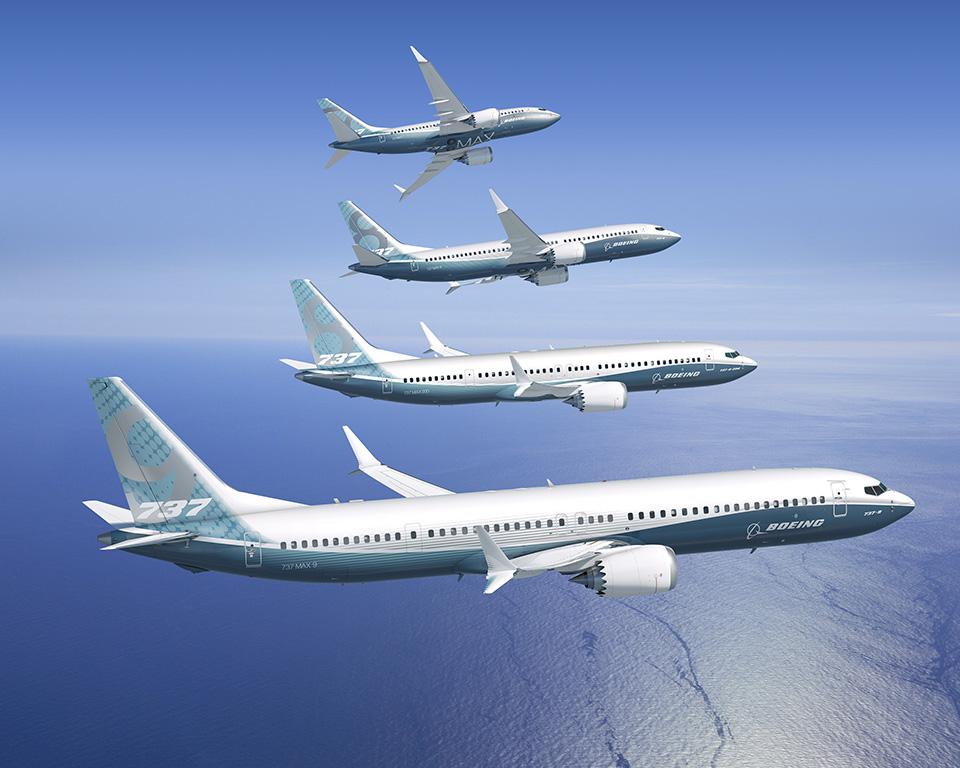
WASHINGTON—The FAA’s finalization of required changes to the Boeing 737 MAX and its formal reversal of a flight ban if the changes are implemented clears the way for U.S. operators to get their grounded aircraft back in service.
But operators elsewhere are still waiting for their regulators to sign off on Boeing’s MAX updates and specify additional requirements.
A final airworthiness directive (AD), released Nov. 18 and expected to be published in the coming days, specifies steps—notably installing new flight control computer (FCC) software—operators must take before they can return MAXs to revenue service. A final Flight Standardization Board (FSB) report specifies updated training that all MAX pilots must undergo, including mandatory simulator sessions and specific reviews of the MAX’s maneuvering characteristics augmentation system (MCAS).
A required addition to the 737 speed trim system to ensure the MAX handles like its predecessors in certain rare, high angle-of-attack (AOA) flight profiles, MCAS played prominent roles in two fatal accidents that led regulators to ground the 385-aircraft MAX fleet in March 2019. Boeing halted deliveries immediately and has about 470 MAXs in storage that must be modified before being handed over to customers.
Investigations into the two accidents, Lion Air Flight 610 (JT610) in October 2018 and Ethiopian Airlines Flight 302 (ET302) in March 2019, spotlighted seven MAX-specific safety issues that the FAA required Boeing to address. They related to the MCAS’s logic, authority and related maintenance procedures as well as flight crew training and alerting. Work that started just after the JT610 accident and expanded following the ET302 accident has addressed each issue, the FAA determined.
“The design changes eliminate the possibility of an accident occurring that is in any way similar to the Lion Air and Ethiopian accidents,” FAA Administrator Steve Dickson told reporters. “That’s the bottom line.”
While other regulators are expected to issue their own MAX approvals, at least some plan to mandate additional changes beyond what the FAA has required.
“Transport Canada (TC) safety experts continue their independent validation process to determine whether to approve the proposed changes to the aircraft,” Canada’s Minister of Transport Marc Garneau said. “We expect this process to conclude very soon. However, there will be differences between what the FAA has approved today and what Canada will require for its operators. These differences will include additional procedures on the flight deck and pre-flight, as well as differences in training.”
EASA is preparing its draft AD for release later in November with a 28-day public comment period, a spokesman said. A final version is expected in late December or early January, paving the way for European operators it oversees to start readying their MAXs to return.
Brazil’s ANAC said it “will proceed with the final adjustments to complete the validation process” for the model’s return to its airspace, noting that cooperation among EASA, FAA, TC and ANAC helped get the MAX evaluation and update process this far. “However, ANAC works with independent assessments to ensure that all necessary requirements will be met in the safe return of the operations of these aircraft in Brazil,” ANAC CEO Rafael Botelho said.
Among the issues of disagreement between the FAA and other regulators is whether to address nuisance stick-shaker stall-warning alerts. In both accidents, erroneous AOA data from one of two AOA sensors told the FCC that the aircraft’s nose was too high. This triggered the MCAS, which responded with nose-down horizontal stabilizer inputs that confused and ultimately overwhelmed both crews.
The bad AOA data also triggered the stick-shaker on the faulty sensor’s side, even though neither aircraft was at risk of stalling. Regulators in Canada, Europe and the United Arab Emirates as well as several pilot groups called for an approved procedure, such as pulling a circuit breaker, that lets pilots disable such nuisance alerts. But the FAA relented, noting in the AD’s preamble that its evaluation of the new MCAS software and related failure modes determined that the “flight-deck effects” and pilot workload are “compliant and safe,” even with a stick-shaker. The agency also said that the circuit breaker is too far from the pilots’ seated position to access without introducing additional risk.
Another issue, spotlighted by EASA, would add a third AOA data source, likely a calculation using data from other instruments, to the two physical sensors on each MAX. While not required for return to service, EASA pushed for introduction of the additional AOA source, which the agency said Boeing has agreed to introduce on the 737-10 undergoing certification. Once approved, the FAA is expected to mandate a fleet-wide retrofit via an AD, though Dickson cautioned that nothing has been decided.
“That is work that we will undertake going forward,” Dickson said. “We are going to do this with the [FAA] Certification Management Team and the other states of design—Brazil, Canada, and [Europe]. It’s not wise to predetermine a specific outcome.”
The FAA plans to continue its international dialogue with multiple outreach sessions in the next few weeks to discuss its decisions with regulators, Dickson said.
“There’s very little daylight between us,” Dickson said. “I believe that, as painful and as arduous as the process has been, it has really strengthened the cooperation between these regulators. I think it will put us in a much stronger position globally for aviation safety.”
The final AD and FSB do not differ significantly from draft versions issued in recent months. The final minimum training standards do not incorporate several suggestions made by pilot groups. Among them: calls for new lessons on runaway stabilizer responses, electric and manual stabilizer trim usage and unreliable airspeed scenarios to be done at least once every 24 months, instead of every 36 months, as the FAA decided.
The agency also did not adopt recommendations to require pilots to experience MCAS activations in the simulator more than one time. The Air Line Pilots Association (ALPA) was among several groups that called for recurrent MCAS simulator training, but the agency determined that only the new ground-based lessons on the MCAS must be repeated.
ALPA said the “engineering fixes to the flight-critical aircraft systems” approved by the FAA are “sound.” The union, which represents pilots that fly for several MAX customers, said it “continues to review the specific enhanced flight crew training details.”
An FSB outlines minimum training requirements. Airlines can add elements as they see fit.
With new training finalized, airlines can begin revamping their own training programs and technical manuals and presenting them to the FAA for review and approval. These steps, in addition to required pilot training and maintenance, are expected to take weeks. American Airlines is the first carrier to put the MAX back on its schedule, with revenue flights starting in late December.
“The FAA’s directive is an important milestone,” Boeing Commercial Airplanes president and CEO Stan Deal said. “We will continue to work with regulators around the world and our customers to return the airplane back into service worldwide.”
While the FAA’s approval of the MAX changes ends the model’s 20-month grounding, many issues uncovered during the saga remain unresolved. Training issues addressed in the new FSB, such as more emphasis on trim system operation, may need to be applied to other transport-category aircraft, an independent technical advisory board (TAB) set up to review the MAX changes said.
Bigger picture: changes to FAA certification processes are underway, and more are coming. The agency has a TAB in place reviewing the 777X—a rare step for an aircraft program’s initial certification. Legislation passed by the U.S. House of Representatives on Nov. 17 would require more changes, including how the agency’s Organization Designation Authorization program, which relies on manufacturers to validate some of their certification work, is staffed and managed.
To hear more about the MAX saga and Boeing’s future, register for the complimentary Aviation Week webinar - Return of the MAX on November 24, 11:00 EST / 16:00 GMT.


